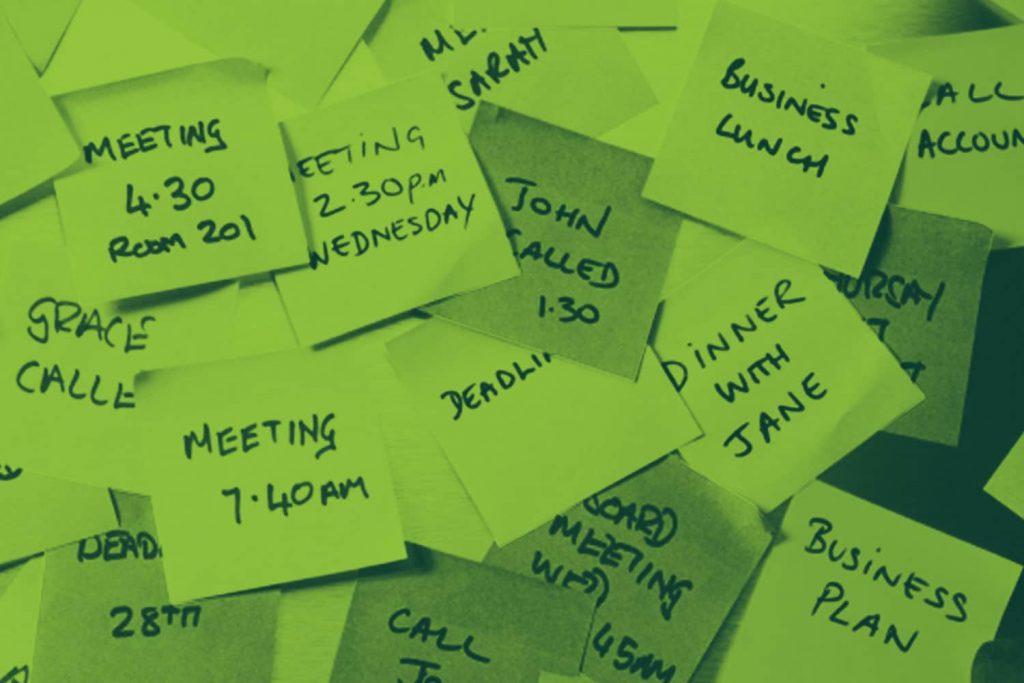I’ve spent the last several days immersed in an intensive (and exhaustive) review how I “get things done” that included:
- A “cleanse & purge” of my two physical workspaces (both at work and at home)
- An overhaul of my digital task management system
- An update of my digital & physical “file cabinets”
- A purge of my backpack and traveling workspace tools
As I wrap up this process and reflect on what I’ve learned, I’m surprised at some of what I’ve discovered.
I have several changes planned because of this exercise (some big, some small) – but this is not a post about how to get more stuff done. Rather this whole exercise was about understanding what one is doing, and how those things impact what it is we are designed to do.
With that said, here are my observations:
1. We are most effective when we have have one primary (physical) workspace.
Designate one physical space as “home-base” and maintain everything (inbox, physical files, etc.) in that location. Have a process for getting things to and from other locations to “home-base” (e.g.: using designated file folders in a backpack).
Don’t make the mistake I have (for years) thinking that “home-base” should be a work office, just because you have one – it’s different for everyone. I work remotely all the time (traveling, client locations, home office, work office) – so I get the challenges of a mobile work-life. I moved my “home-base” to my home office about six months ago and have been far more productive – and a lot happier. I still have my work office, but maintain the bulk of my files and reference materials, etc. at my “home-base”.
For me, I do a lot of work very early in the morning (probably the best work I do all day) so it doesn’t make a lot of sense to have all my reference tools, best equipment, and all my files at my work office which is 20-minutes away from my house. Decide for yourself where your “home-base” should be based on where you are able to get the most work done, but also on how easily accessible that space is to you.
2. GTD helps relieve anxiety (and fear).
If you’ve ever had the fleeting thought, “I can’t forget to (blank),” you should acquaint (or re-acquaint) yourself with David Allen’s GTD (Getting Things Done) process.
The greatest weapon of “The Resistance” is anxiety (and fear). It can distract from our current focus, create doubt, and paralyze us into inaction – or worse, un-prioritized actions. When you have a system in place to capture and prioritize these fleeting thoughts, you have a big sword and shield against “The Resistance”.
3. Don’t separate your “work” and “personal” life.
You are one whole person. It’s a mistake to draw a hard line between “work” and “personal” when it comes to your action items and projects. You’ll always struggle with priorities and focus as long as you keep these categories separated. “Work” and “personal” are merely aspects, or components, of one seamless life.
4. We still need physical files in a digital world.
I’m an Evernote junkie – that said, there are still times when we need physical files. I tried to ditch my physical files about a year ago and found it to be a huge (and relatively unnecessary) challenge. There are just some things that are easier to throw into a file cabinet for the one-time a year one needs to access them. I am still 98% paperless (scanning paper notes and new documents into Evernote) – I just decided to stop stressing about being 100% digital for items that don’t matter all that much.
5. Train your team, or you’re wasting your time.
If you don’t mentor your team in the productivity methods you are practicing, they won’t understand how to best respond to your assignments and inquiries – and they won’t be as productive for you as they could be. Seems obvious, but it’s something we often miss when focused on trying to get our stuff done.
6. Without a plan, you’re destined to fail.
Establish your priorities and goals from a 30,000 ft. perspective before you try to tackle your task list. If you don’t have a framework in place for what you care most about (and what it is you want to accomplish with your life and your work), you’ll say yes to any new opportunity that comes your way. First establish what it is you care most about and that will inform what you focus on when it comes to actions and projects.
7. You have to capture everything first.
One of the most cathartic experiences when it comes to “your stuff”, is to complete a “mental sweep.” This, like all things GTD, is not a new idea – but you’ve got to get all your thoughts and to-dos out of your head and recorded somewhere so you can take action on them.
Capturing everything (big and small) frees up your mental capacity and allows your mind some breathing room. You’ve got to complete this step first before you can take the next step of prioritizing and taking action.



